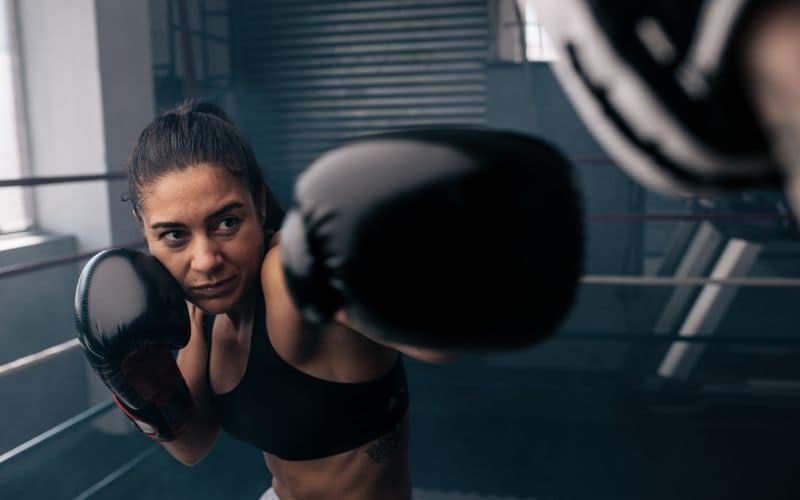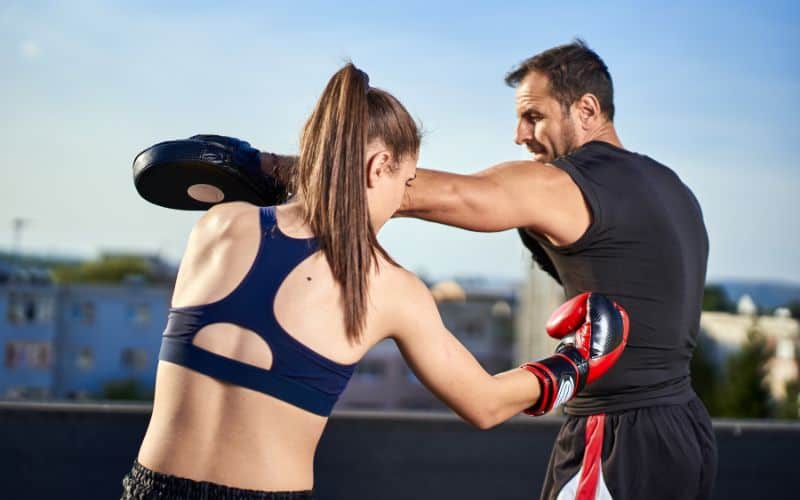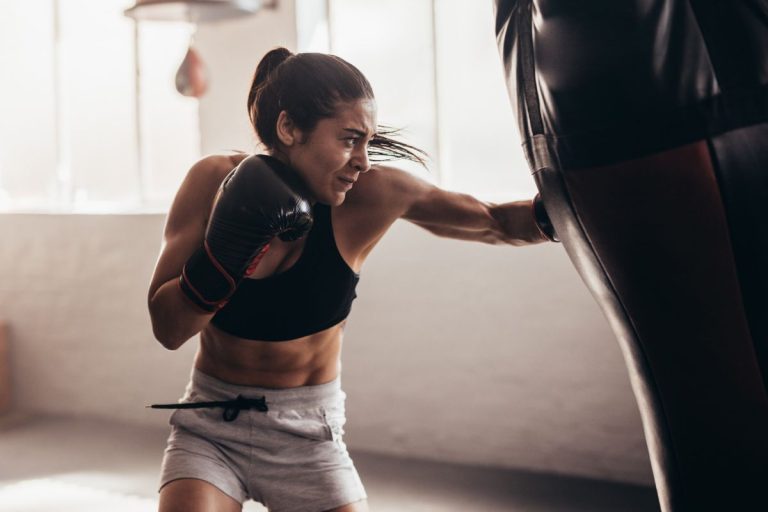Boxing is an intensive and demanding discipline for developing personal fitness. It is also a popular sport and is recognized, along with Judo, wrestling, and mixed martial arts as one of the world’s most effective unarmed fighting systems.
In movies we often see fighters train by running up huge flights of stairs, chopping wood in the snow, or towing farm equipment with a rope around their waist. Of course, all within the context of a dramatic training montage.
But we never saw Rocky Balboa peddling a Schwinn through the streets of Philadelphia! Perhaps it does not seem dramatic enough for cinema
But I believe cycling can be a great addition to the fitness routine of boxing aficionados, and even a valuable training method for serious fighters if it is done correctly and with sufficient intensity.
Is Cycling Good For Boxing?
If done with the proper intensity and focus, cycling can help prepare your body and mind for the ring. Riding a bicycle is only as physically demanding as you make it, and for this reason, we will see that it does have certain drawbacks as a training method for boxers.
But first, let’s cover the pros of cycling as a part of your boxing training regimen.
For a start, let us just get it out of the way that we are not talking about indoor, stationary cycling. That might be a reasonable option if the weather is dangerously inclement. But for our purposes, when I talk about cycling, I am talking about going outdoors on a real bicycle and contending with the real world.
Related article – Can Indoor Cycling Help Improve My Running?
Here are 6 reasons why cycling can be great for your training routine.

Strength Development
It is very common in boxing, and strength training in general, to neglect the lower body.
In some ways, cycling is even better for lower body strength than running. After all, you rarely see distance runners with massive quadriceps. Cycling allows you to perform deep leg presses. You have to go uphill for that of course, but you can plan your route so that you do encounter the number of hills that you want to tackle.
Cycling also gets the core, back, and arms involved, that is if you do it with sufficient intensity. The problem is the temptation to switch to an easy gear when facing a challenging incline. If you find yourself unable to resist this temptation, a fixed-gear bike might be the best way to avoid it.
The strength of your core and legs are supremely important to boxing, as any seasoned fighter knows.
If you have strong legs, back, and abdominal muscles, you have a sturdy foundation on which to build a powerful boxing technique, and cycling can definitely help you develop those muscles.
Low Impact Fitness
One important benefit of cycling is that it is much easier on your bones, joints, ligaments, and internal organs than running.
You might exhaust yourself cycling and still feel much fresher than you would after an equally exhausting run. This is simply because you will feel less “beat up” 🥵 after a long jaunt on a bike.
Running is often considered essential for boxing training. But not everyone has the biomechanics to run safely. If that describes you, cycling can be a useful way to get the benefits of running without pounding pavement.
Related article – Is Running Or Cycling Worse For Your Knees?

Building Boxing Stamina
Combat sports of any kind are notoriously exhausting. In the ring and on the street, fighters who lack stamina lose their edge very quickly. This is why running is such a common part of a boxer’s training routine.
Running is likely the best endurance sport for boxers to engage in. But, if done properly, cycling can give you similar benefits. The problem is that it’s easy to slack off on a bike. So you need discipline and determination.
For most people, the best trick might be to use a bike to get to the boxing gym. When it comes to transportation, the biggest drawback of cycling is you’re likely to be sweaty when you get there. But there are no excuses if you go to and from the gym!
Training for Coordination
Probably the most well-known exercise to train coordination between the feet and hands is jumping rope.
A boxer must have an instinctual understanding of the structure of the punch he intends to throw. If you intend to throw a light punch, it can be okay if your back foot is not planted firmly on the ground, but it isn’t recommended.
However, you need a firm foundation if you intend to commit to a strong right cross.
Cycling can be a good addition to your routine for this kind of coordination.
When you press the pedal down, your body needs to respond to steer the bike in the right direction and not fall over. The arms and torso need to work in coordination with the feet in a right/left, left/right fashion. This hand/foot coordination is similar to the hand/foot coordination needed to throw a proper punch.
Interesting read – When Should I Replace My Bike Pedals?

Mental Training
When you jump on a bike and move through various terrain, you have to be aware of your surroundings.
In so many fitness routines, we focus only on a specific “action of the body” with almost zero need for situational awareness. Cycling demands that you pay keen attention to the ground, what’s ahead of you, and what may be coming across intersections.
In boxing, we need to develop an instinctive feel for form and timing, and we need to maintain that while negotiating with our opponent.
In this way, cycling and boxing are very similar. You would do well to spend time in the mental state that cycling can put you in as it will serve you in the ring.
Emotional Training
In addition to the mental state described in the last section, cycling has one more thing in common with boxing – danger. When you mount a bike, you accept the fact that you might get injured. Accepting the risk of injury and the experience of pain are key to mastering any combat sport.
The best boxers, like F1 drivers, fighter pilots, and anyone who braves danger has an underlying attitude that not doing the thing they love might be worse than the potential harm they face.
Some people call that courage. Others call it stupidity. In ancient times, and in war, this type of bravery is known as Valor, and that word has an etymology in common with the word “value.”
In short, cycling can be dangerous, and only a person who is willing to accept that can excel in the boxing ring.

The Drawbacks Of Cycling As Training For Boxers
As mentioned above, cycling for fitness comes with certain drawbacks.
The most significant drawback is that cycling allows you to relax, catch your breath, and go easy on yourself.
If you have a lot of gears on your bike, you might be tempted to take the work out of your ride by flipping those levers. Likewise, coasting down a long decline can disrupt the value of your cardiovascular training.
This is why I recommend cycling to and from the boxing gym. This way, there’s no loss if you happen to slack off in transit, only benefit. You’ll also save money on gas.
But if you intend to get any real benefit out of your cycling as a boxer, you need to look at your desire to slack off as your opponent. Surely, I don’t have to tell you not to go easy on your opponent!
Final Thoughts
Boxing is not just a combat sport. Nor is it only a way to get in shape. It is a serious martial art that is respected for its elegance, power, and practicality by world-class fighters everywhere.
That being the case, cycling can be an excellent addition to your boxing fitness and training regimen if it is done with the right mindset and intensity. Cycling alone isn’t enough, but it can help you develop the coordination and the attitude you need to be a competent boxer.

